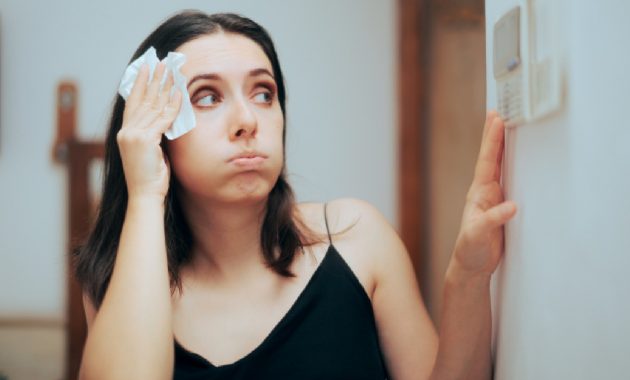Seasonal Affective Disorder is not merely a winter thing. The scorching summer heat can also bring you summertime blues.
Seasonal Affective Disorder (SAD) typically strikes people in winter, when the it is almost dark and dreary with reduced exposure to daylight. However, some people experience similar symptoms of feeling bleak and weary even in summer. As it happens, lack of sunshine is not always the culprit behind the ‘blues’. People can also experience something called summertime blues. Some of the SAD symptoms can be felt by people in the summer months, when the transition of weather from cold to warm may sink mood in many pressing ways.
If you feel you are experiencing summertime blues or summer seasonal affective disorder, let us tell you what is it and how to cope with summertime blues.
Symptoms of summer Seasonal Affective Disorder
Changes in temperatures have long been associated with physiological and related psychological changes. When the environmental temperature reaches extreme ranges, humans experience related physiological changes and these can have a strong impact on the psyche. Extreme low temperatures and cold winter, along with lack of exposure to sunlight, have been shown to relate to sad mood, and low energy levels for day-to-day activities. Similarly, rising temperatures have been correlated with increased irritability and mood changes, says psychologist Geetika Kapoor.

Some of the concerns signs to watch out for include:
• Irritability
• Anxiety
• Changes in appetite
• Low energy levels
• Having trouble focusing
• Changes in sleep patterns
• Sense of hopelessness
• Inability to relax
• Staying aloof on your own
• Lesser interest in social engagement with others
Also Read

What causes summertime blues?
A major trigger for winter SAD is a big drop in exposure to natural daylight which is thought to hinder our body’s in-built circadian rhythm. It also hampers our brain’s ability to process serotonin, a mood-influencing chemical. However, even with ample sunlight in summer, people tend to feel gloomy. So, light is not always the problem.
So, what contributes to summertime SAD? Let us find out!
1. Disrupted routines
Sticking to one particular routine to inculcate discipline is said to be crucial while managing depression symptoms. But excess heat outside can hamper our usual routine and ruin the way we conduct day-to-day life. So, disrupted routines can be a major cause for summertime blues.
2. Excess heat outside
Peak summer months always mean intolerable temperatures. This sudden spike in outside temperature makes more people shift indoors and that leads to less indulgence in mood-boosting exercise. Also, people who suffer from mental health issues like depression, anxiety, or schizophrenia notice aggravated symptoms in hot weather.
3. Social pressure
Winter months are the best times to hibernate and cocoon in the cosy indoors. Also, because of the excess cold outside, people dodge the urge to socialize. But, as the season transitions to summer, people host soirees, and people feel the social pressure taking a toll on their mental health.
Select Topics of your interest and let us customize your feed.
PERSONALISE NOW

How to deal with summertime blues?
Knowing the impact that extreme temperatures can have on us, it is advisable to watch out for these changes and proactively prepare to mitigate these effects. Some tactics to try can include:
1. Awareness is the key
Build awareness about one’s own individual vulnerabilities. Everyone is unique in terms of body resilience and stamina. It is useful to track one’s history and build acceptance of one’s own capacities and thresholds. This way we can anticipate and be prepared for the upcoming temperature-related shifts, reckons the expert.
Also read: Feeling SAD? Here are 7 signs of seasonal affective disorder to look out for
2. Practice kindness towards yourself and others
Stay aware of temperamental differences among family members and work colleagues. Human beings exist in groups. All individuals influence the others. Therefore, we must look out for how others are being impacted by extreme weather temperatures. We all need to work towards regulating emotional impact in ourselves as well as others around us.
3. Consider treatment for preexisting psychiatric illnesses
People who have been identified as experiencing psychiatric illnesses would be more vulnerable to extreme temperatures and should be in touch with their treating doctors and therapists about precautions and changes in treatment course if needed, suggests the expert.
4. Ensure physical comfort
Deliberately maintaining comfortable temperatures in rooms and surroundings can go a long way towards mitigating the negative impact of extreme heat. If outside heat is bothering you, try to stay in cooler temperatures inside and go out only when urgent. Try to maintain a cool environment inside with the help of equipment like air conditioners.
5. Ensure adequate fluid intake
Keeping yourself hydrated and well-nourished can help regulate physical comfort and energy. A common physiological effect of rising temperatures is loss of water due to increased perspiration. So, to make up for that loss of water, drink more fluids every day in those months.
6. Pay attention to what you wear
Some cloth materials help regulate body temperature better than others. Wear breathable and light fabrics like cotton or muslin that ensure movement of air. Also, if you are stepping outside, make sure to wear clothes that cover your body to avoid getting any skin issues which can also trigger anxiety.
#Summertime #blues #Seasonal #affective #disorder #summer
